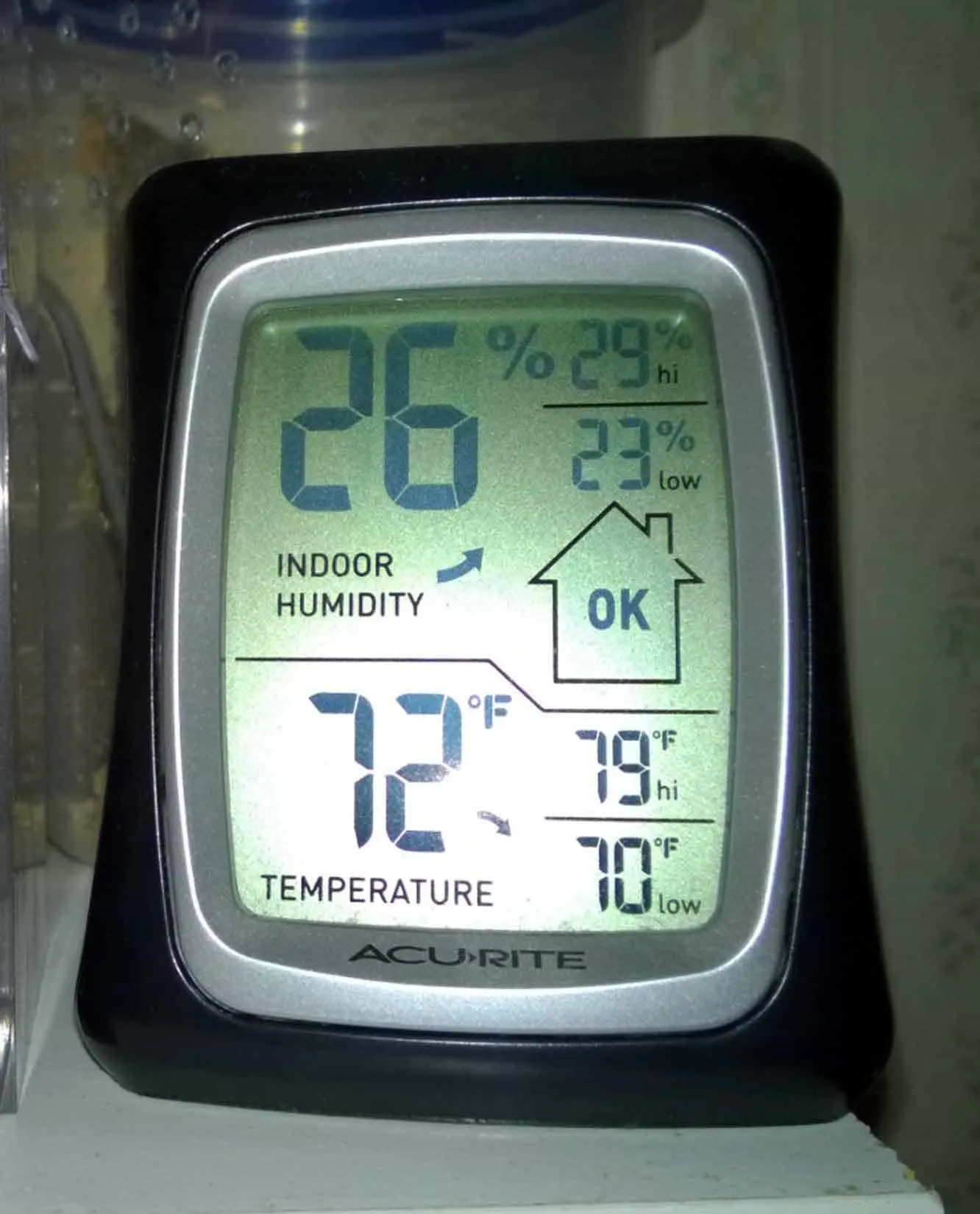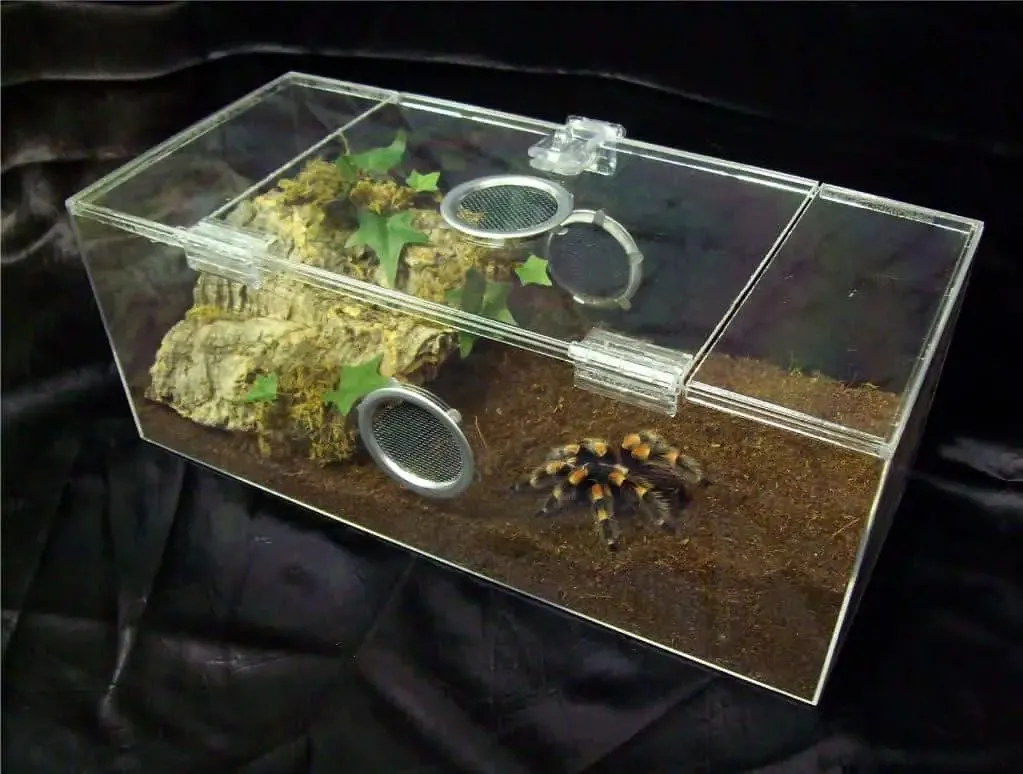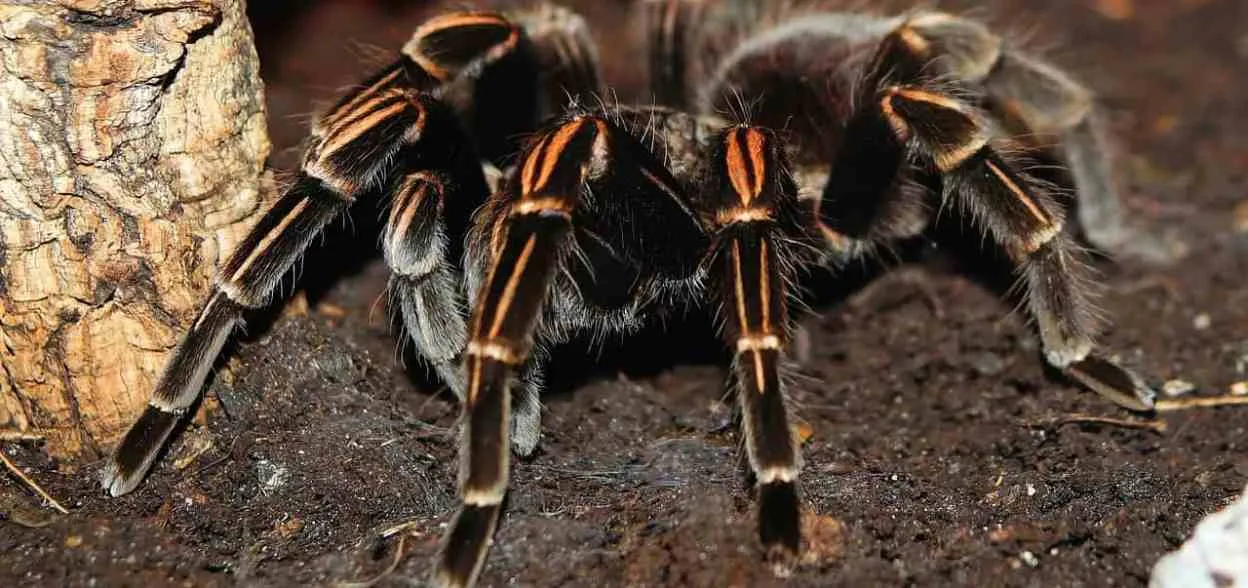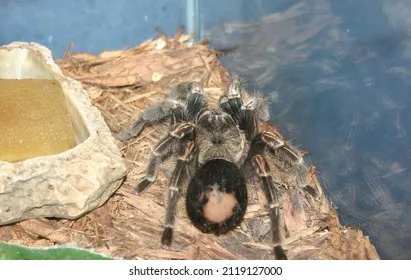Why Proper Heating Matters for Tarantulas
Heating a tarantula tank is not merely about keeping the enclosure warm; it’s a critical aspect of tarantula care that directly impacts the spider’s health, behavior, and overall well-being. Tarantulas are ectothermic, meaning they rely on external heat sources to regulate their body temperature. Unlike mammals, they cannot generate their own heat. Therefore, understanding and implementing proper heating techniques is fundamental to successful tarantula keeping. This guide delves into the essential aspects of heating a tarantula tank, ensuring your pet thrives in a comfortable and healthy environment. It’s important to have the correct temperature, humidity, and the right equipment to ensure your tarantula survives.
Metabolic Needs
A tarantula’s metabolism is directly linked to its environmental temperature. Warmer temperatures speed up metabolic processes, enhancing digestion, growth, and activity levels. When a tarantula is kept at the correct temperature range, it is more likely to eat regularly, grow at a healthy rate, and exhibit natural behaviors such as web-building and exploration. Conversely, cooler temperatures can slow down metabolism, leading to decreased appetite, slower growth, and potentially, health problems. It’s crucial to understand that temperature affects the efficiency with which tarantulas convert food into energy, affecting their overall health.
Temperature and Humidity Correlation

Temperature and humidity are intrinsically linked in a tarantula’s environment. The ideal temperature range typically encourages appropriate humidity levels, crucial for molting and hydration. Higher temperatures can decrease humidity if not managed correctly, leading to potential dehydration issues. In contrast, lower temperatures can cause humidity to increase, which may result in the growth of mold and bacteria, harmful to your tarantula. Therefore, the heating system needs to work with the ventilation system. Proper ventilation helps in maintaining a stable environment. The perfect balance ensures your tarantula can thrive. Monitoring and maintaining both parameters are essential for creating a safe and healthy habitat.
Consequences of Improper Heating
Incorrect heating can lead to severe health problems for tarantulas. Overheating can cause dehydration, stress, and even death. If a tarantula is too hot for a prolonged period, it can lead to metabolic dysfunction and reduced life expectancy. Conversely, inadequate heating can cause a tarantula to become lethargic, refuse food, and become susceptible to diseases. In extreme cases, prolonged exposure to cold temperatures can be fatal. Improper temperature conditions can also negatively affect the molting process, leading to failed molts and other complications. Therefore, it’s imperative to maintain an appropriate temperature range to avoid these potentially fatal outcomes.
Choosing the Right Heating Equipment
Selecting the right heating equipment is crucial for providing a comfortable and healthy environment for your tarantula. Several options are available, each with its pros and cons. The choice of heating equipment will depend on the size of the enclosure, the species of tarantula, and your specific environmental needs. It’s important to consider factors such as safety, efficiency, and ease of use when making your decision. Research and careful planning ensure you create an effective and reliable heating system that supports your tarantula’s well-being.
Heat Mats

Heat mats are a popular choice for heating tarantula tanks. They are typically placed under the enclosure, providing gentle, consistent heat. Heat mats are effective at heating the substrate and creating a warm area for the tarantula. However, it’s essential to use a thermostat with a heat mat to regulate the temperature and prevent overheating. They should not cover the entire bottom of the tank to allow for a thermal gradient, where the tarantula can move to areas of varying temperatures. Heat mats are especially suitable for smaller enclosures and terrestrial tarantula species. Always follow manufacturer’s instructions for safe use. It’s also advised to check the temperature regularly with a thermometer to ensure the safety of your pet.
Heat Lamps
Heat lamps are another option, particularly for larger enclosures or arboreal species. Heat lamps emit radiant heat, warming the air within the enclosure. They can be a bit more challenging to control the temperature with heat lamps compared to heat mats, and they must be used with caution. The proper distance between the lamp and the tarantula is very important to avoid burns. A thermostat is mandatory when using a heat lamp. It is vital to provide a basking area for the tarantula, but also ensure there are cooler areas to prevent overheating. When choosing a heat lamp, it’s important to consider the wattage, the type of bulb (e.g., incandescent, ceramic), and the safety features.
Ceramic Heat Emitters
Ceramic heat emitters (CHEs) are an excellent alternative for providing heat without light. They emit infrared heat, which is beneficial for the tarantula, without disrupting their natural day-night cycle. CHEs are particularly useful for nocturnal species or in setups where you want to maintain a consistent temperature day and night. Like heat lamps, CHEs require a thermostat for safe operation. They are usually mounted at the top of the enclosure, directing heat downwards. The choice of a CHE depends on the size of the enclosure and the heating needs of the tarantula species. It’s important to choose a CHE with a suitable wattage to maintain the desired temperature without overheating the tank. Ensure the emitter is protected and cannot be directly touched by the tarantula.
Thermostats Controlling the Temperature

A thermostat is an essential piece of equipment for any tarantula heating system. A thermostat regulates the heat source, preventing the enclosure from overheating. It works by monitoring the temperature and turning the heat source on and off to maintain a stable temperature range. Using a thermostat is crucial for the safety of your tarantula, as it can prevent accidental burns and other temperature-related health issues. Choose a thermostat that is compatible with your chosen heat source (heat mat, heat lamp, or CHE). Digital thermostats offer precise temperature control and are highly recommended. Properly setting up and calibrating your thermostat is crucial for maintaining the desired temperature range within the enclosure, creating a safe and comfortable habitat for your tarantula. There are many thermostats on the market. Make sure you choose a quality one to keep your tarantula safe.
Setting Up Your Heating System
Setting up a tarantula heating system correctly is essential for providing a safe and comfortable environment for your pet. Careful planning and execution of the setup process will help ensure that the heating system functions effectively and efficiently, supporting the tarantula’s well-being. The placement of heat sources, monitoring the temperature, and establishing a thermal gradient are critical aspects of the setup process. These steps will help you create an ideal habitat, mimicking the tarantula’s natural environment. The choice of equipment and how you place it inside of your tank are crucial. Here are some tips.
Placement of Heat Sources
The placement of heat sources depends on the type of equipment you choose. For heat mats, place the mat on the outside of the tank, typically on the underside or side. Ensure that the mat does not cover the entire base of the tank, as this will create an even temperature and prevent the tarantula from regulating its body temperature by moving to a cooler area. For heat lamps and CHEs, mount them above the enclosure, ensuring that they are securely positioned and out of reach of the tarantula. Ensure the heat source is positioned to create a thermal gradient within the enclosure, with areas of varying temperatures. Always follow manufacturer instructions for the placement of your chosen heating equipment and monitor the temperature closely after setup to ensure it is working correctly. The position of your heat source is very important. A good placement will help keep your pet safe.
Monitoring Temperature and Humidity

Regularly monitoring both temperature and humidity levels is a fundamental aspect of responsible tarantula care. Investing in a reliable thermometer and hygrometer is essential. Place these devices within the enclosure in a location that accurately reflects the environmental conditions. The thermometer should be placed where you can easily read it, and the readings must be taken frequently. Check the readings daily to identify any fluctuations or inconsistencies. Keep a record of the temperature and humidity levels. Monitoring these parameters will allow you to make necessary adjustments to the heating and ventilation systems. Maintaining a consistent environment is critical for your tarantula’s health. Consistent monitoring will ensure its safety.
Creating a Thermal Gradient
A thermal gradient is essential for tarantulas, allowing them to regulate their body temperature. The enclosure should have areas of varying temperatures, from warmer to cooler zones. This gradient allows the tarantula to move to areas that match its needs. For example, a tarantula that is too cold can move to a warmer location, and vice versa. When using a heat mat, create the gradient by covering only a portion of the tank’s base. If using a heat lamp or CHE, the gradient is naturally created. This gradient can be achieved by placing the heat source on one side or at the top of the enclosure. Proper setup allows the tarantula to thermoregulate effectively and supports healthy metabolism and overall well-being. Providing a gradient is a must for all tarantula setups.
Maintaining Optimal Conditions
Maintaining optimal conditions for your tarantula’s enclosure is an ongoing process. This includes not only controlling the temperature and humidity but also regularly monitoring and making necessary adjustments to ensure a healthy and comfortable habitat. Keeping a constant eye on these parameters is key to long-term success in tarantula care. It also includes understanding the specific needs of your tarantula species. This process requires diligence and attention to detail. This section will cover the essential steps you need to perform on a daily basis.
Daily Temperature Checks

Conducting daily temperature checks is a crucial task in tarantula care. Check the temperature in multiple locations within the enclosure to verify the thermal gradient and confirm that the heating system functions correctly. Note the temperatures you observe. Adjust the thermostat settings as needed to maintain the desired temperature range. Regularly check the thermometer’s accuracy, and if needed, replace it. The specific temperature range will vary depending on the tarantula species. Keeping a record will help you identify patterns and trends and will also help in troubleshooting issues. The temperature of your tarantula is important. Make sure to check the levels daily.
Humidity Management
Humidity plays a vital role in tarantula health, especially for molting. Managing humidity involves a combination of ventilation, substrate, and misting. Adjust ventilation levels to help control humidity. A well-ventilated enclosure prevents moisture buildup. Choose the appropriate substrate for your tarantula’s needs. Some substrates retain more moisture than others. Lightly mist the enclosure with dechlorinated water, but avoid over-misting, as this can lead to mold growth. Monitor the humidity levels using a hygrometer, and make adjustments as needed. Maintain proper humidity levels for successful molting and overall well-being. The humidity depends on the species of tarantula, so ensure you are familiar with your pet.
Ventilation Importance
Proper ventilation is crucial for maintaining healthy conditions. Good airflow helps regulate humidity, prevent the buildup of harmful gases, and reduce the risk of mold and bacterial growth. Ensure that the enclosure has adequate ventilation, usually achieved through a combination of ventilation holes or mesh. Avoid blocking ventilation openings. In some cases, you may need to adjust the ventilation to control humidity levels. Monitor the enclosure for signs of excessive moisture or poor air quality. Ventilation, temperature, and humidity work together to keep your tarantula healthy.
Troubleshooting Common Issues

Despite your best efforts, issues can arise when heating a tarantula tank. Being prepared to troubleshoot common problems is essential. Knowing how to identify and address these issues quickly can prevent harm to your tarantula and ensure a stable environment. This section addresses some common challenges, from tank temperatures to humidity fluctuations. The faster you can solve these issues, the healthier your tarantula will be.
Tank Too Cold
If the tank is too cold, the tarantula’s metabolism will slow down, leading to a decreased appetite and lethargy. Check the thermostat settings to confirm the temperature is set correctly, and make sure the heating equipment is functioning. If the temperature is still too low, you may need to increase the wattage of the heat source. Ensure that the heat source is placed correctly and that there are no drafts around the enclosure. Observe your tarantula for signs of cold stress, such as hiding excessively or a lack of activity, and make adjustments as needed. Make sure to resolve cold temperatures immediately to ensure your tarantula is healthy.
Tank Too Hot
Overheating can be just as dangerous as being too cold. If the tank is too hot, the tarantula may exhibit signs of dehydration, restlessness, and, in severe cases, may lead to death. Verify the thermostat settings and make sure that the heat source is not overheating the tank. If necessary, lower the thermostat setting or move the heat source further away from the enclosure. Ensure that there is adequate ventilation to help dissipate heat. Monitor your tarantula for signs of overheating, such as rapid movement or unusual behavior, and make adjustments to the environment as needed. Always resolve overheating issues quickly to protect your tarantula.
Humidity Fluctuations
Inconsistent humidity levels can be detrimental to a tarantula’s health. High humidity can lead to mold and bacterial growth, while low humidity can hinder molting. Monitor the humidity using a hygrometer and make adjustments to the ventilation, substrate, and misting schedule as needed. If humidity is too high, increase ventilation. If it’s too low, you can increase misting frequency or add a water dish. The ideal humidity range varies depending on the species. Monitor and adjust humidity to create a stable environment. Also, ensure the substrate is appropriate for your tarantula’s species.
Conclusion
Heating a tarantula tank correctly is essential for the health and well-being of your pet. By understanding the importance of temperature, choosing the right equipment, setting up the heating system properly, and maintaining optimal conditions, you can create a safe and comfortable environment for your tarantula. Regular monitoring, proactive troubleshooting, and a commitment to ongoing learning will help ensure your tarantula thrives. Remember, creating an ideal environment is not a one-time task, but an ongoing process of observation, adjustment, and care. With the right knowledge and effort, you can provide your tarantula with a long and healthy life.
